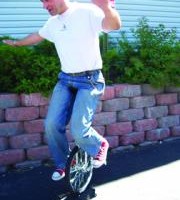Here we are once again with my top reads of the year list. It was a pretty good year; I found some amazing stuff to read, and as usual, I’ve had a hard time paring it down to just a few. Of course, there are a few that aren’t on the list simply because I haven’t finished with them yet…so many books, so little time….
As with my list from previous years, I only have to have read the book in 2010; it doesn’t have to have been published in 2010.
In no particular order, my Top Reads for 2010 are:
The Animal Manifesto: Six Reasons for Expanding Our Compassion Footprint (Marc Bekoff). Addressing not only how we think of animals but also how we don’t think of animals and our impact on them in our day to day lives, The Animal Manifesto is a though provoking and compelling read.
Eaarth: Making Life on a Tough New Planet (Bill McKibben). That’s not a misspelling in the title. According to author Bill McKibben, the conversation about climate change is over and has been for a while. In fact, we don’t even live on the same planet as when the conversation started, hence “Eaarth.”
The Banyan Deer: A Parable of Courage & Compassion (Rafe Martin). This nicely illustrated children’s book is an elegant recreation of a story found in the Pali Jataka of one of the Buddha’s earlier lifetimes. The narrative of a deer king who lays his life on the line not only for his own people but for all creatures, this story is a tale for all ages, with many subtleties layered beneath its surface.
The Death and Life of the Great American School System: How Testing and Choice are Undermining Education (Diane Ravitch). In this book, Ravitch advocates for a back to basics, liberal arts education that broadens the focus of student learning beyond what is looked for on the typical state test (namely reading, writing, mathematics, and perhaps science). She also encourages the return of classroom control to educators versus allowing politicians and business people make decisions about not only how schools should be run, but what students should be taught and how to teach them.
Twelve By Twelve: A One-Room Cabin Off the Grid & Beyond the American Dream (William Powers). Author William Powers writes in a style that is as calming and reflective as the life he details while staying in a twelve-foot-by-twelve-foot cabin in North Carolina.
Food Rules: An Eater’s Manual (Michael Pollan). This relatively short (139 pages) book offers a quick (the whole book can be read within a relatively short time) yet highly useful read as well as a good introduction to the work of Michael Pollan. Pollan offers up 64 “rules” for anyone interested in eating “real food.” These 64 rules can be summed up in the three major guidelines that are used to separate the sections of the book: Eat food. Not too much. Mostly plants.
Through a Dog’s Eyes: Understanding Our Dogs by Understanding How They See the World (Jennifer Arnold). This warmly written and easily read book advocates for treatment of our canine companions as partners rather than just as pets, and training as an exercise in cooperation and choice making instead of domination and control.
The Mirror of Yoga (Richard Freeman) Just as a mirror reflects our image back to us, Freeman envisions yoga as a vehicle to reflect back to the practitioner exactly who we are and who we can become. The Mirror of Yoga provides an overview of the basis for all forms of yoga: hatha, ashtanga, karma, etc., as well as a discussion of the role of the Bhagavad Gita, and the Upanishads in yogic practice. Without diluting or compromising any of the information, Freeman integrates the philosophical and spiritual roots of yoga into an easily understandable and meaningful practice.
Sex, Sin, and Zen: A Buddhist Exploration of Sex from Celibacy to Polyamory and Everything in Between (Brad Warner). Written in his usual casual, humorous style, Warner provides plenty of serious teaching to reflect on throughout the book. However, don’t look for any clear-cut, hard and fast rules about sex in relation to Buddhism here; Warner points out that the Buddha himself didn’t provide many solid rules about really anything, so he doesn’t feel compelled to.
Freeing the Body, Freeing the Mind: Writings on the Connections Between Yoga & Buddhism (Michael Stone, ed.) The rather arbitrary division between yoga and Buddhism has been the subject of many articles online and in print, but in spite of what seems to be a plethora of views on the subject, Stone gathers together works from a wide range of luminaries who are able to grant fresh and historical perspectives on the subject without rehashing previously made arguments.
Fraser’s Penguins (Fen Montaigne) Moving effortlessly and seamlessly from poetic description to scientific discussion, Montaigne is able to weave a narrative that is both poignant and informative.
Rebel Buddha: On the Road to Freedom (Dzogchen Ponlop Rinpoche) Dzogchen Ponlop Rinpoche follows in the footsteps of the original teachings of the Buddha by encouraging the reader to eschew that which doesn’t make sense.
5 Minds for the Future (Howard Gardner) Howard Gardner offers up his views on which forms of thinking, or minds, will serve us best for life in the 21st century and beyond.
The Lost Art of Reading (David L. Ulin) Ulin offers a warning for the digital age: we may be “reading” more, but are we processing less?










Read 4 comments and reply